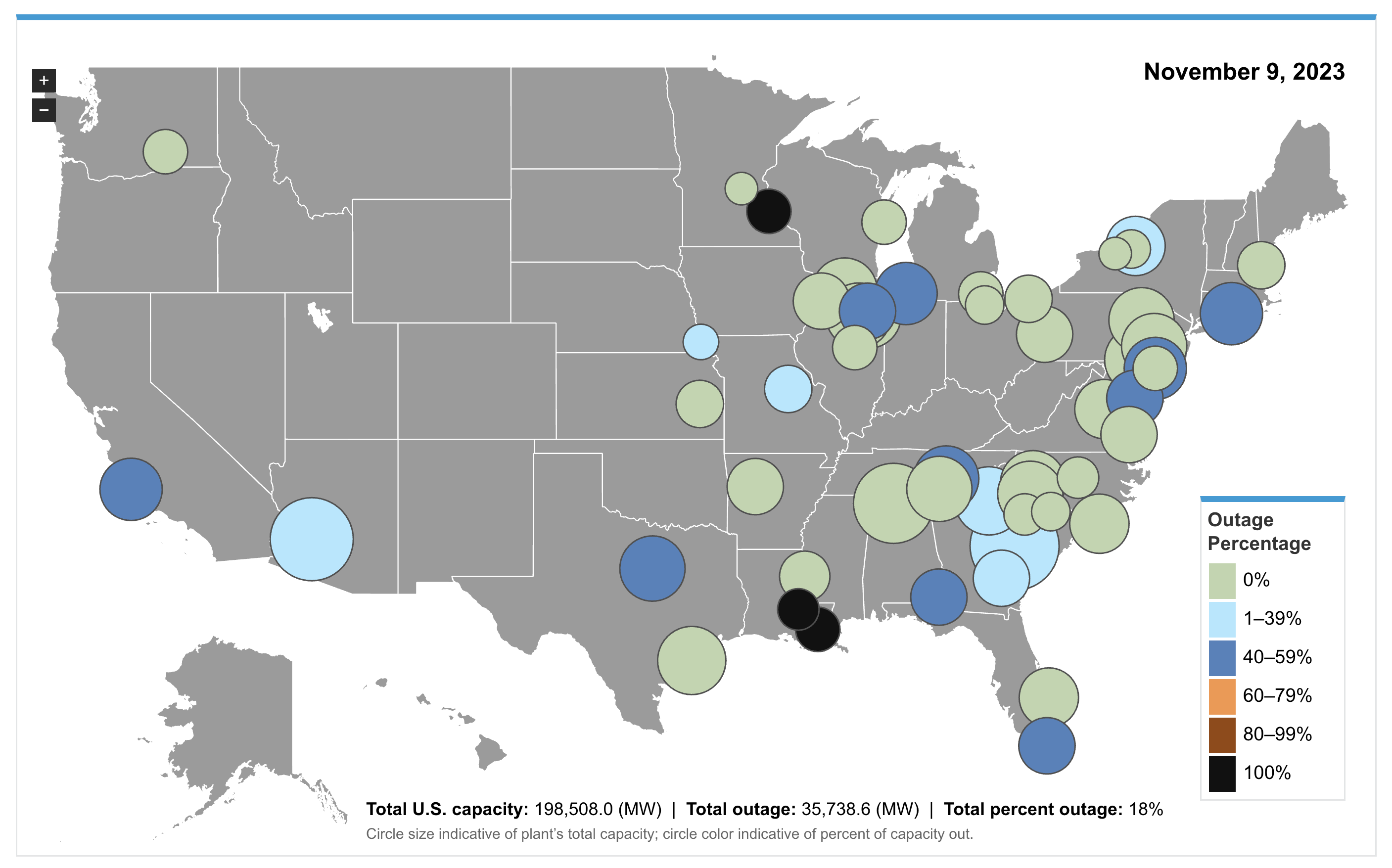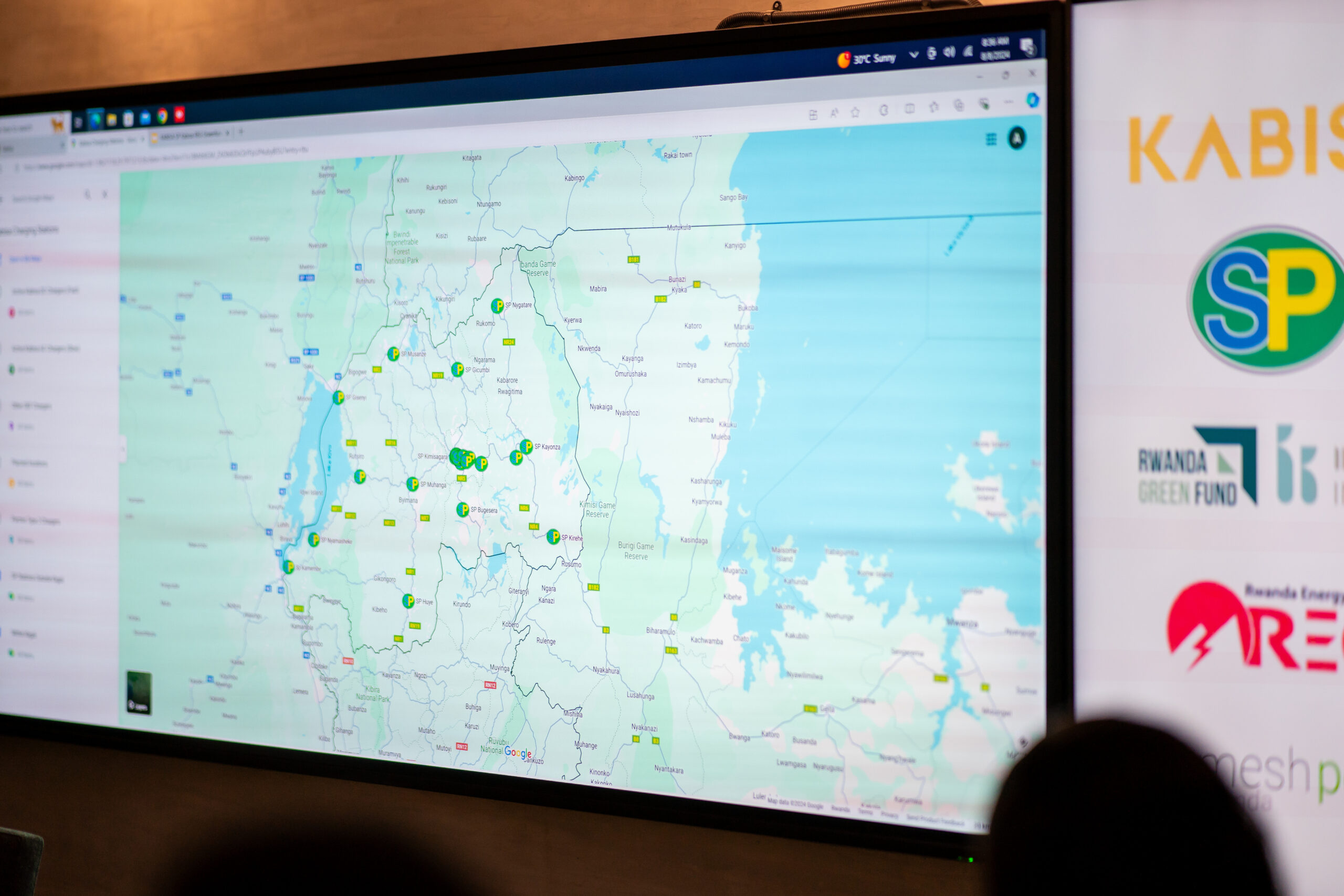Every morning, each nuclear electricity generator in the United States reports its operating status to the Nuclear Regulatory Commission (NRC). The NRC compiles this information in its Power Reactor Status Report, and we present that information in interactive visualizations on our Status of Nuclear Outages page. Our analysis tool combines the NRC daily status with data gathered from our Annual Electric Generator Report and Monthly Update to the Annual Electric Generator Report. The page includes two maps showing the capacity and outage status of U.S. nuclear plants.

Nuclear power reactors are typically refueled every 18 to 24 months. Although the refueling process can be completed in as few as 10 days, outage periods are typically longer because of noncritical maintenance that is completed concurrently with refueling to minimize downtime over the course of the year.
Nuclear generators typically operate at or near maximum capacity. Nuclear plant operators generally schedule refueling outages for the fall and spring months, sometimes referred to as shoulder months, when the demand for electricity is usually lowest because demand for heating and cooling is lower.
Although we launched the Status of Nuclear Outages page in 2015, it includes NRC’s daily information on nuclear reactor status back to January 1, 2007. The page shows the magnitude of outages but does not provide information on the cause of those outages. The NRC makes additional plant status information available four weeks after the outage is initially reported.
Principal contributor: EIA Staff. Originally published on EIA’s Today in Energy blog.




